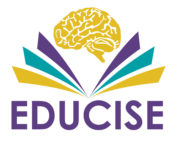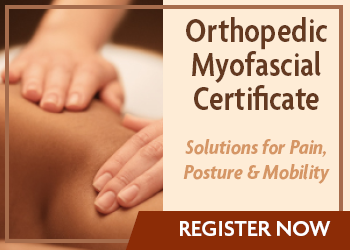Orthopedics and Rheumatology Open Access Journal published my article on Cupping Therapy! Want to learn how to use this soft tissue mobilization tool?
Check out our live or home study course.
https://juniperpublishers.com/oroaj/pdf/OROAJ.MS.ID.555741.pdf
*Theresa A Schmidt
Physical Therapist, Northport, USA
Submission: September 11, 2017; Published: September 12, 2017
*Corresponding author: Theresa A Schmidt, Physical Therapist, Northport, New York, USA, Email:
Mini Review
You saw it on the Olympian swimmers in the 2016 Games,
on Michael Phelps, on the backs of actresses sashaying down the
red carpet, including Gwyneth Paltrow, Jessica Simpson, Victoria
Beckham, Jennifer Aniston, and David Arquette. Serena Williams,
Justin Bieber and Kim Kardashian also joined the “new” trend
in experiencing this ancient modality. Those blotchy red or
purple marks and perfect circles are the tell-tale of the cupping
procedures familiar to practitioners of Asian and traditional
bodywork and folk medicine, used for centuries. History
indicates cupping was used centuries ago in ancient Asia, China,
(Ge Hong) Egypt, (Ebers Papyrus), and Greece (Hippocrates).
The original cups were hollowed horns or bones of animals
and bamboo plants, used to suck out toxins from snakebites
and insect venom. Over the years, practitioners of Traditional
Chinese Medicine have used glass fire-cups combined with
acupuncture or even bloodletting (wet cupping) for a variety of
clinical conditions. Over time the cups were refined to produce
the ones we use today, composed of glass, plastic, rubber, or
silicone. Western clinicians are now using cupping as a manual
therapy or soft tissue release tool, such as foam rollers, massage
balls, and stretch bands. The procedure is known as dry cupping.
Let’s take a look at some of the recent evidence-based literature
regarding the effects of dry cupping.
In a randomized controlled trial (RCT) of 70 soccer players,
Fousekis et al. [1] compared the results of three interventions
on myofascial trigger point pain in the low back: instrumentassisted
soft tissue mobilization, static dry cupping and ischemic
pressure, applied once weekly for 3 weeks. All interventions
demonstrated a significant improvement in pressure pain
thresholds, although the former showed the most improvement.
Fousekis [1]. In a RCT of 50 patients with chronic neck pain, Saha
et al. [2] showed improved function, mental health, quality of
life and decreased pain after five 10-minute sessions of gliding
cupping over two weeks.
Cao et al. [3] published a systematic review of clinical evidence
for cupping therapy in 2015. They reported a need for additional
rigorous studies since the ones reviewed showed either
inadequate methodological quality or an insufficient number
of trials. For the trials meeting established criteria for inclusion
the systematic review, they found that cupping therapy was
superior to interventions including medications for conditions
such as low back pain and cervical spondylosis, facial paralysis,
acne and herpes zoster. In a single blind RCT in 60 subjects
with chronic neck and shoulder pain, Chi et al. [4] reported a
significant reduction in neck pain intensity and elevation in skin
surface temperature after a single treatment of10 minutes of
static fire cupping bilaterally to three acupuncture points (SI15,
GB21, LI15, in upper trapezius and deltoid).
Markowski et al. [5] reported significant improvement in
low back pain, range of motion, and leg raise in 21 subjects
given cupping with four pressurized cups over the low back.
These are just a sample of the studies available on cupping
therapy. Rozenfeld & Kalichman [6] provided a summary
of cupping methods and literature review, in which they
discussed the physiological effect of cupping, including
increased circulation, immune system activation, lymphatic
flow enhancement, mechanoreceptor stimulation with resultant
reduction in nociceptive input and gating of pain [7-13]. Several
studies demonstrated the efficacy of cupping for a variety of
musculoskeletal conditions [14-18]. More research is advised
to determine the mechanisms involved in the physiological
response to cupping, and to compare the effects of cupping to
other standard interventions used to manage musculoskeletal
dysfunction [19-22].
References
1. Konstantinos Fousekis, Eleni Kounavi, Symeon Doriadis, Konstantinos
Mylonas, Elias Kallistratos, et al. (2016) The Effectiveness of
Instrument-assisted Soft Tissue Mobilization Technique (Ergon
(C) Technique), Cupping and Ischaemic Pressure Techniques in the
Treatment of Amateur Athletes’ Myofascial Trigger Points. Journal of
Novel Physiotherapies S3: 009.
2. Saha FJ, Schumann S, Cramer H, Hohmann C, Choi K, et al. (2017) The
Effects of Cupping Massage in Patients with Chronic Neck Pain – A
Randomized Controlled Trial. Complement Med Res 24(1): 26-32.
Ortho & Rheum Open Access J 8(4): OROAJ.MS.ID.555741 (2017) 001
Orthopedics and Rheumatology
Open Access Journal
ISSN: 2471-6804
How to cite this article: Theresa A S. Not Just Folk Medicine: Myofascial Cupping in the Tech Age!. Ortho & Rheum Open Access 2017; 8(4): 555741.
DOI: 10.19080/OROAJ.2017.08.555741. 002
Orthopedics and Rheumatology Open Access Journal
3. Cao H, Han M, Zhu X, Liu J (2015) An overview of systematic reviews
of clinical evidence for cupping therapy. Journal of Traditional Chinese
Medical Sciences 2(1): 3-10.
4. Chi LM, Lin LM, Chen CL, Wang SF, Lai HL (2016) The Effectiveness
of Cupping Therapy on Relieving Chronic Neck and Shoulder Pain: A
Randomized Controlled Trial. Evidence-Based Complementary and
Alternative Medicine 2016: 7358918.
5. Markowski A, Sanford S, Pikowski J, Fauvell D, Cimino D (2013) A
Pilot Study Analyzing the Effects of Chinese Cupping as an Adjunct
Treatment for Patients with Subacute Low Back Pain on Relieving
Pain, Improving Range of Motion, and Improving Function. J Altern
Complement Med 20(2): 113-117.
6. Rozenfeld E, Kalichman L (2016) New is well-forgotten old: The use
of dry cupping in musculoskeletal medicine. J Bodyw Mov Ther 20(1):
173-178.
7. Ahmed A (2015) Innovative Energy Standard of Curative Cupping/
Hijama. Journal of Basic & Applied Sciences 11: 445-453.
8. Akbarzade M, Ghaemmaghami M, Yazdanpanahi Z, Zare N,
Mohagheghzadeh A, et al. (2016) Comparison of the Effect of Dry
Cupping Therapy and Acupressure at BL23 Point on Intensity of
Postpartum Perineal Pain Based on the Short Form of McGill Pain
Questionnaire. J Reprod Infertil 17(1): 39-46.
9. Al Bedah Abdullah MN, Khalil Mohamed KM, Posadzki Paul,
SohaibaniImen, Aboushanab Tamer Shaaban, et al. (2016) Classification
of Cupping Therapy: A Tool for Modernization and Standardization.
The Journal of Alternative and Complementary Medicine. 22(10): 768-
777.
10. Cobian D (2016) Cupping: Why We’re All Seeing Spots. American
Physical Therapy Association, Alexandria, Virginia, USA.
11. Dons’koia BV, Chernyshov VP, Osypchuk DV, Baksheev SM (2016)
Cupping manipulation temporary decreases natural killer lymphocyte
frequency, activity and cytotoxicity. J Integr Med 14(3): 197-202.
12. Farhadi K, Choubsaz M, Setayeshi K, Kameli M, Bazargan-Hejazi S, et al.
(2016) The effectiveness of dry-cupping in preventing post-operative
nausea and vomiting by P6 acupoint stimulation: A randomized
controlled trial. Medicine (Baltimore) 95(38): e4770.
13. Gok, S Kazanci, FH Erdamar, H Gokgoz, N Hartiningsih, S Dane (2016)
Is it possible to remove heavy metals from the body for wet cupping
therapy (Al-hijamah?) Indian Journal of Traditional Knowledge. 15(4):
700-704.
14. Koh KS, Park SW, Oh TS, Choi JW (2016) Flap preconditioning by
pressure-controlled cupping in a rat model. J Surg Res 204(2): 319-
325.
15. Kurniawan D, Darsini, Udaya M (2013) Effect of Changes Cupping
Therapy In The Elderly With Joint Pain Rheumatoid Arthritis (Study
In UptPsluJombang). Nursing Journal of StikesInsan Cendekia Medika
Jombang 5(1): 13-18.
16. Lauche R, Spitzer J, Schwahn B, Ostermann T, Bernardy K, et al.
(2016) Efficacy of cupping therapy in patients with the fibromyalgia
syndrome-a randomized placebo controlled trial. Scientific Reports 6:
37316.
17. Li T, Li Kai (2016) A noninvasive device for simultaneous monitoring
arterial and venous blood oxygenation and its test in vacuum-based
cupping therapy. 2016 IEEE International Nanoelectronics Conference
(INEC) Chengdu, China, pp. 1-2.
18. Pan L, Ma X-hong, Han S, Hui HU (2016) Comparative Study on the
Therapeutic Efficacy between Medicinal Cupping and Bloodletting
for Chronic Low Back Pain. Shanghai Journal of Acupuncture and
Moxibustion 35(9): 1112-1114.
19. Roostayi M, Norouzali T, Manshadi F, Abbasi M, Baghban A (2016)
The Effects of Cupping Therapy on Skin’s Biomechanical Properties in
Wistar Rats. Chinese Medicine 7: 25-30.
20. Tarek S (2016) Effects of Cupping Therapy Based on Stabilization Core
Exercises On Low Back Pain For Soccer Players In State Of United Arab
Emirates. Science, Movement and Health 16(2): 684-690.
21. Ting Li, Yaoxian Li, Yu Lin, Kai Li (2017) Significant and sustaining
elevation of blood oxygen induced by Chinese cupping therapy as
assessed by near-infrared spectroscopy,” Biomed Opt Express 8(1):
223-229.
22. Wang B, Liu X, Hu Z, Sun A, Ma Y, et al. (2016) YANG’s pricking-cupping
therapy for knee osteoarthritis: a multi-center randomized controlled
trial. Zhongguo Zhen Jiu 36(2): 113-118.
Your next submission with Juniper Publishers
will reach you the below assets
• Quality Editorial service
• Swift Peer Review
• Reprints availability
• E-prints Service
• Manuscript Podcast for convenient understanding
• Global attainment for your research
• Manuscript accessibility in different formats
( Pdf, E-pub, Full Text, Audio)
• Unceasing customer service
Track the below URL for one-step submission
https://juniperpublishers.com/online-submission.php
This work is licensed under Creative
Commons Attribution 4.0 License
DOI: 10.19080/OROAJ.2017.08.555741

